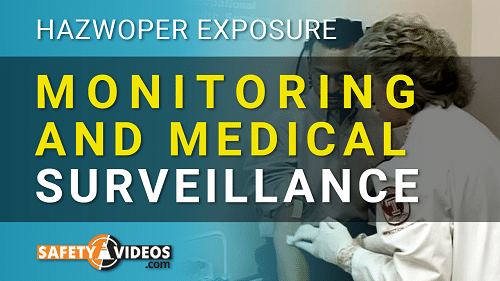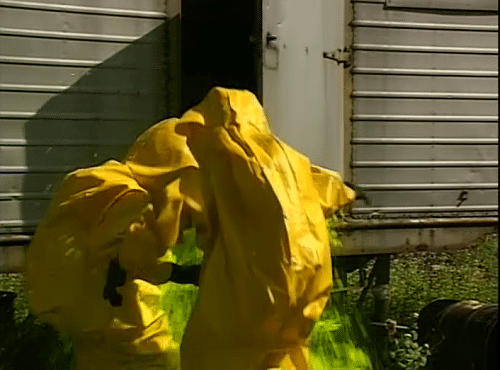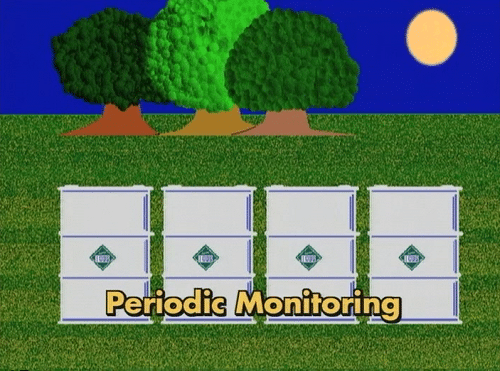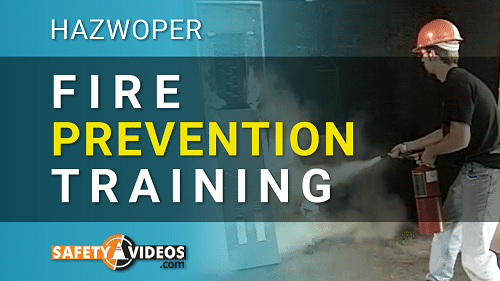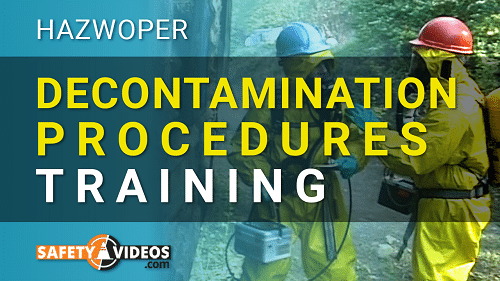HAZWOPER Exposure Monitoring and Medical Surveillance
$239

Whenever you do HAZWOPER training, Exposure Monitoring and Medical Surveillance are essential topics that must be addressed. Identifying airborne contaminants and monitoring the health of those working in a hazardous materials environment is critical to a safe operation. That is why this HAZWOPER training program on Exposure Monitoring and Medical Surveillance is so important. It will teach your employees the ins and outs of these HAZWOPER safety concepts.
This HAZWOPER Exposure Monitoring and Medical Surveillance Training Covers:
- What is medical surveillance in a HAZWOPER environment? (Simply, this is the health monitoring of employees who regularly work around hazardous materials)
- What is Exposure Monitoring when it comes to HAZWOPER? (This is the monitoring of any contaminants that might be present in a hazardous materials setting and might include dust, vapor, gases, etc.)
- Exposure monitoring helps facilities to determine if there are any unhealthy environments within their facility and/or worksite and to help the Team choose the right personal protective equipment (PPE) for the specific conditions that exist)
- What are the types of exposure monitoring instruments that might be used at your facility? (there are sampling collection devices that are collected and analyzed in a lab at a later time, and there are direct reading instruments that take instant measurements about the current environmental conditions in the work area)
- Which type of monitoring instrument can measure IDLH or “Immediately dangerous to life and health conditions?” (the only instrument that can do this are the direct-reading instruments which give instantaneous data)
- How does OSHA or the CDC define IDLH? (They pose an immediate threat to life, they would cause adverse health effects, and they would interfere with the employee’s ability to escape from a dangerous area)
- What are the downsides of using a direct reading device? (They are sensitive only to a limited range of chemicals and no single device allows you to identify every possible contaminant)
- What are the downsides of using sampling collection devices? (Results aren’t immediate, you have to wait for the results. Also, those devices aren’t able to identify IDLH situations)
- Should you use a direct reading device or a sampling collection device in your HAZWOPER or hazardous materials environment? (You should use both because they complement each either very well)
- What are some examples of tools used to monitor IDLH conditions or other atmospheric hazards? Examples include:
- Combustible gas indicators
- Oxygen indicators
- Radiation detectors
- Colorimetric detector tubes
- and others…
- What are some examples of confined spaces that might require exposure monitoring? Examples include:
- Storage tanks
- Box cars
- Mine shafts
- Silos
- and others…
More Topics Covered in This Exposure Monitoring and Medical Surveillance for HAZWOPER Training:
- How is “General On-Site Monitoring” defined under HAZWOPER? (This is where the work area is monitored for contaminants, whether they are an IDLH threat or not)
- What is a sampling pump, how is it used, and when should it be used? (A sampling pump traps air in a collection device for testing….the contaminants are then stored in collection media such as filter cassettes, sorbent tubes or impingers and they are then tested by a lab)
- What is “perimeter monitoring,” and how does it help your testing protocol?
- What is “periodic monitoring,” and what role does it play in your testing program?
- What is a “breathing zone,” and how does it help you monitor your personal medical condition?
- When is medical surveillance required? (If you have been injured or become ill working near hazardous substances, you are a member of a hazmat response team, or you will be exposed to any chemical above its published exposure limit for more than 30 days throughout the year)
- What are the five types of examinations that are part of a medical surveillance program?
- Pre-employment screenings
- Periodic examinations
- Examinations upon separation or job reassignment
- Emergency examinations following an injury or overexposure situation
- Whatever other examinations a doctor might think is necessary or appropriate
- How often does OSHA require a periodic examination under HAZWOPER? (At least once every two years)
- What is a “physician’s written medical opinion” when it comes to medical monitoring?
- and much more…
Be sure to make Exposure Monitoring and Medical Surveillance a big part of your HAZWOPER training program. This video training kit will help you accomplish that goal. Available as an English or Spanish-speaking USB stick or DVD, this training is 21 minutes long.
HAZWOPER Exposure Monitoring and Medical Surveillance Training Video – Full Length Preview:
